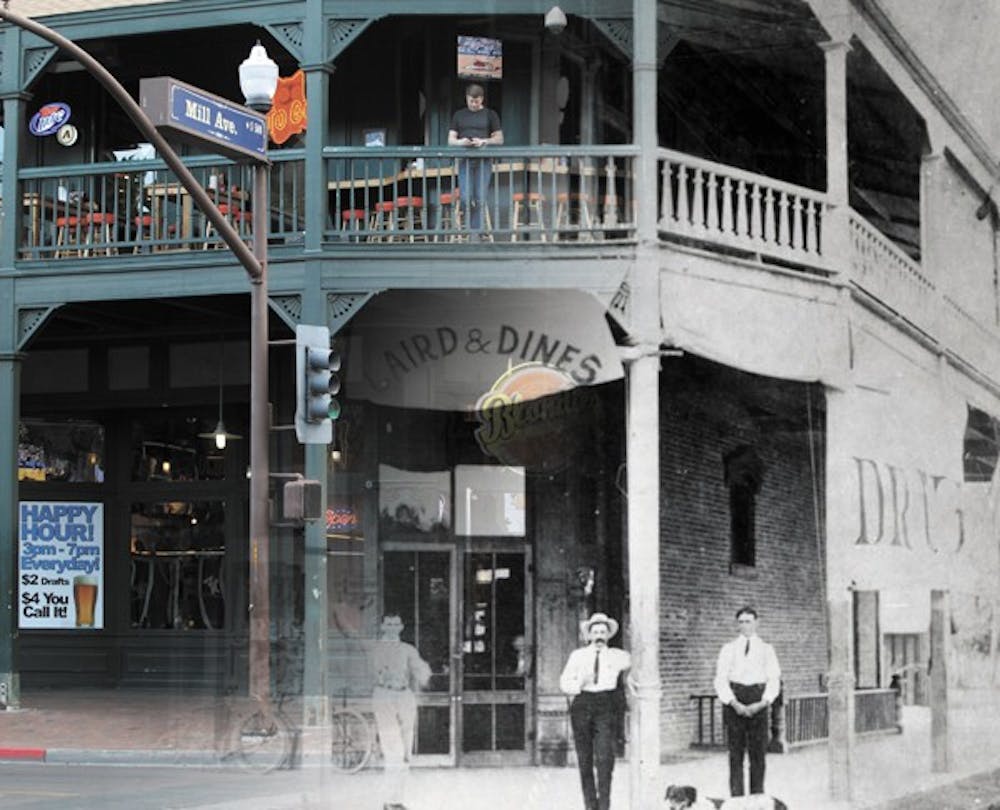Although Mill Avenue District is now lined with bars, boutiques and restaurants, it started out more than 100 years ago as a hub for agriculture, said Jared Smith, curator of history at the Tempe History Museum.
Farmers growing grains and alfalfa settled the Tempe area alongside Native American tribes that had been cultivating the land for years.
These farmers gave business to the iconic Hayden Flour Mill, and though Tempe has undergone drastic changes since its establishment in 1894, the mill is one of the few original buildings left standing.
“We’re in an area that loves to tear things down,” Smith said.
Historic buildings symbolic of Tempe’s original economic interests still stand repurposed to house a modern economy.
“It’s kind of morphed over the years,” Smith said.
Tempe is getting more creative with its economic forces because it is landlocked, he said.
“You constantly have an evolution of how things are reused,” Smith said.
The Tempe creamery, built in 1892, was once a cornerstone of the economy and is now Four Peaks Brewery, geared toward college students and young professionals drawn to the area by ASU, Smith said.
The brewery preserved much of its old brick.
Another repurposed Tempe business, Casey Moore’s Oyster House on South Ash Avenue and University Drive, was originally a home built in 1910 for William A. Moeur, Gov. Benjamin B. Moeur’s brother.
Benjamin Moeur was Tempe’s only doctor in the early 20th century and Arizona’s governor from 1932 to 1936.
Owners Patty St. Vincent and David Arkules bought the house for their business when they were forced to move the restaurant from downtown Phoenix to make way for the Chase Bank building in 1983.
The historic home, as well as the restaurant, remains valuable in the historic neighborhood, St. Vincent said.
When they bought the building, they were hoping the business wouldn’t have to move again, St. Vincent said.
“I think the neighbors really appreciate that we are in an old building,” St. Vincent said.
St. Vincent and Arkules applied for the building to be recognized as a historic property with a plaque because the neighbors were protective of Casey Moore’s, St. Vincent said.
Although most of Tempe’s original businesses have been repurposed to survive, the first movie house was opened by Dwight Harkins in 1933 and still operates as a movie theater today.
Dwight’s son, Dan Harkins, who was born in the theater, now owns the Harkins Theatres chain. Harkins Theatres have spread to Southern California, Colorado, Texas and Oklahoma. The second theater built in 1940 operates as the Valley Art Theatre in Tempe today.
The Valley Art Theatre remains open even though it loses money each year, Harkins said.
“It’s a way to show gratitude to movie-goers over the decades,” Harkins said.
Although the exterior of the Valley Art Theatre is the same as it was in the ‘40s, the interior has been remodeled with modern amenities such as digital projection, digital sound and wall-to-wall screens, Harkins said.
“Local residents have come to grow with and rely on the theater,” Harkins said. “It gives us a heart and soul in the community, unlike any other business.”
Reach the reporter at michelle.peirano@asu.edu
Click here to subscribe to the daily State Press newsletter.





